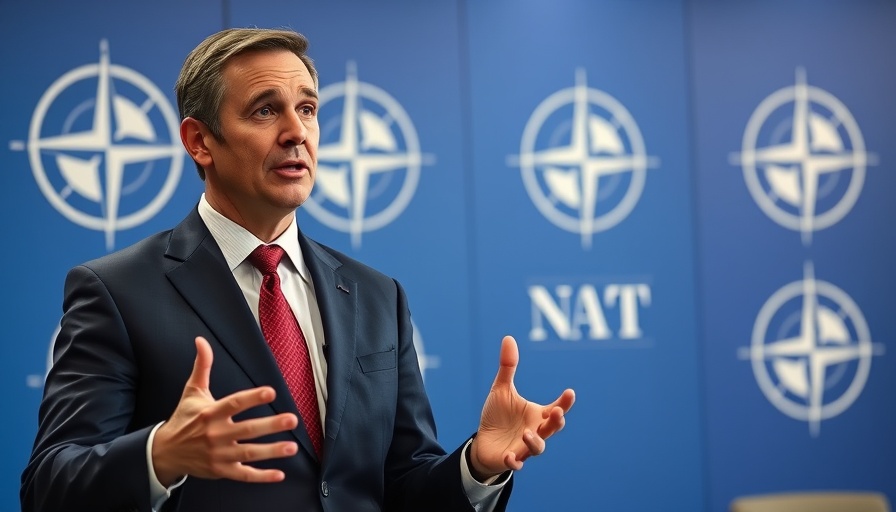
NATO's Increasing Data Vulnerabilities: A Call for Urgency
In a climate of rising geopolitical tensions, a new report has highlighted critical data vulnerabilities within NATO that could potentially endanger lives if not swiftly addressed. Specifically, as NATO's digital infrastructure struggles with outdated defenses, the report emphasizes that the United States must take the lead in modernizing these systems. With threats looming from adversaries like Russia, enhancing data security isn’t just an IT issue; it’s a matter of national and international security.
The Implications of Data Weakness
Failing to strengthen NATO’s data defenses could have dire consequences. The report warns that these vulnerabilities might impede NATO's ability to respond swiftly to military threats, making it more difficult to coordinate actions among member nations. As military operations increasingly rely on high-tech solutions, a data breach or system failure could result in significant battlefield setbacks. It is vital for web developers and IT specialists within NATO’s files to grasp that their work is integral not only to national safety but to global security.
Urgent Need for US Collaboration
The report advocates for a renewed commitment from the U.S. government to lead the modernization of NATO’s digital framework. By collaborating with allied countries and investing in cutting-edge cybersecurity solutions, the U.S. can help mitigate these risks and preserve effective global defense strategies. With the right technological backing, NATO could harness innovations such as AI, machine learning, and blockchain to bolster its defenses.
Lessons from Cyber Incidents
Looking back at past cyber incidents, such as the significant breaches experienced in the 2016 U.S. election cycle, it is clear that complacency can lead to catastrophic outcomes. Experts agree that just as governments had to adapt to the new digital realities, NATO must now prioritize agile responses to cybersecurity threats. Web developers working within defense systems must continuously update their skills and tools to address evolving threats.
Counterarguments: Is the Threat Overstated?
While the report sheds light on NATO's vulnerabilities, some critics argue that the alarm may be overstated. They suggest that NATO's military readiness isn't entirely dependent on digital security but also on conventional forces and strong alliances among member states. They caution against over-reliance on technology, highlighting potential risks of digital dependence that could paralyze operational decision-making in times of crisis.
Future Insights and Preparedness Strategies
To ensure NATO's data integrity moving forward, a key insight from the report is to implement adaptive risk management strategies. These may include regular updates, threat assessments, and comprehensive training programs that highlight the importance of cybersecurity awareness within military ranks. Additionally, web developers must champion transparency and interdisciplinary collaboration to create resilient systems capable of withstanding sophisticated cyberattacks.
Connecting the Dots: The Role of International Cooperation
The call to action from NATO’s report isn’t just about technology; it's also about fostering international cooperation. As cyber threats don’t respect national borders, there’s an opportunity for NATO nations to share intelligence and resources, creating a united front against these threats. This could lead to innovative solutions benefiting not only NATO but also other allied partners around the globe.
In conclusion, NATO's vulnerabilities represent a significant challenge that requires urgent action from the U.S. leadership. As geopolitics further evolves, a robust and secure digital infrastructure within NATO can serve as a deterrent against adversaries. By leveraging expertise from web developers and IT specialists, the alliance can safeguard lives and enhance collective defense strategies—a crucial step for preserving peace and stability worldwide.
 Add Row
Add Row  Add
Add 




Write A Comment